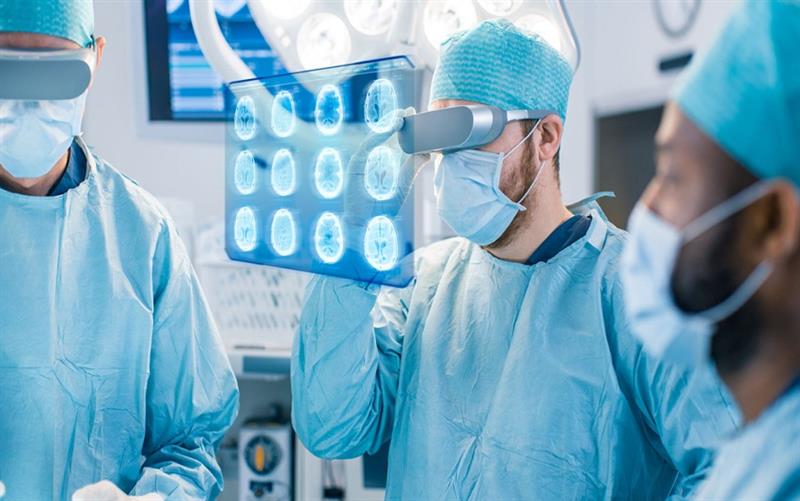
In the ever-evolving landscape of healthcare, technology continues to break barriers, driving innovations that were once the stuff of science fiction. Among these advancements, Software as a Medical Device (SaMD) stands out as a game-changer, revolutionizing how we diagnose, monitor, and treat medical conditions.
Software as a Medical Device is undeniably reshaping patient care, offering innovative solutions that enhance diagnostic accuracy, improve chronic disease management, and make healthcare more accessible and cost-effective. As technology continues to advance, SaMD will play an increasingly critical role in delivering high-quality, personalized healthcare, heralding a new era of medical innovation. The future of patient care is here, and it is digital.
Understanding Software as a Medical Device (SaMD)
SaMD refers to software designed to perform medical functions without being part of a hardware medical device. Unlike traditional medical devices, SaMD operates independently on general-purpose computing platforms like smartphones, tablets, and cloud-based systems. This unique capability allows it to leverage the latest advancements in software development, data analytics, and machine learning to provide innovative healthcare solutions.
Key Benefits of SaMD
1. Improved Patient Outcomes
SaMD applications offer precise, real-time data analysis, leading to early detection of diseases, personalized treatment plans, and continuous monitoring of patients. For example, diabetes management apps can monitor blood glucose levels and provide instant feedback, helping patients maintain optimal health and avoid complications.
2. Accessibility and Convenience
SaMD makes healthcare more accessible, especially in remote or underserved areas. Patients can access sophisticated diagnostic tools and treatment options through their smartphones or other devices, reducing the need for frequent hospital visits and enabling remote consultations with healthcare professionals.
3. Cost-Effectiveness
By streamlining diagnostic and treatment processes, SaMD reduces healthcare costs. Automated data collection and analysis minimize the need for expensive tests and procedures, while telemedicine capabilities cut down on travel expenses and time off work for patients.
4. Enhanced Data Utilization
SaMD leverages big data and artificial intelligence to provide deeper insights into patient health. These insights can lead to more accurate diagnoses, better treatment plans, and a broader understanding of population health trends, ultimately contributing to improved public health strategies.
Applications of SaMD in Patient Care
Software as a Medical Device (SaMD) is revolutionizing the healthcare industry by offering innovative solutions that improve diagnostic accuracy, enhance chronic disease management, and provide accessible and personalized patient care. Here, we delve into the key applications of SaMD in patient care, illustrating its transformative impact across various medical fields.
1. Diagnostic Tools
Advanced Medical Imaging Analysis
SaMD applications are increasingly used to analyze medical images such as X-rays, MRIs, and CT scans. Utilizing artificial intelligence (AI) and machine learning algorithms, these applications can detect abnormalities with remarkable accuracy. For instance, AI-powered software can identify early signs of cancers, fractures, and neurological disorders, assisting radiologists in making more precise diagnoses and reducing the likelihood of human error.
Genetic Testing and Analysis
Genomic data analysis software can interpret complex genetic information to identify mutations associated with hereditary conditions. This enables personalized treatment plans and preventive measures for conditions like cancer, cardiovascular diseases, and rare genetic disorders.
2. Chronic Disease Management
Diabetes Management
SaMD applications for diabetes management include continuous glucose monitoring (CGM) systems that track blood glucose levels in real-time. These apps can provide instant feedback on blood sugar levels, recommend insulin dosages, and offer dietary and lifestyle advice. For example, platforms like mySugr and Dexcom G6 allow patients to manage their diabetes effectively and avoid complications.
Cardiovascular Health Monitoring
Cardiac health apps can monitor heart rate, blood pressure, and other vital signs. They use this data to detect irregularities and predict potential cardiac events. Apps like KardiaMobile provide ECG monitoring that can identify atrial fibrillation and other heart conditions, enabling timely medical intervention.
Respiratory Disease Management
For patients with asthma or chronic obstructive pulmonary disease (COPD), SaMD solutions can track symptoms, medication use, and environmental triggers. Apps like Propeller Health help patients manage their respiratory conditions by providing insights and personalized action plans to reduce exacerbations.
3. Mental Health Support
Mood Tracking and Therapy Tools
SaMD applications are making mental health support more accessible. Apps like Woebot and Happify use cognitive behavioral therapy (CBT) techniques to help users manage stress, anxiety, and depression. These tools offer exercises, mood tracking, and real-time support, making mental health care more approachable and immediate.
Mindfulness and Stress Reduction
Mindfulness apps such as Headspace and Calm provide guided meditation, breathing exercises, and stress reduction techniques. These SaMD solutions help users manage their mental well-being and improve overall mental health through regular practice.
4. Rehabilitation and Recovery
Post-Surgery Rehabilitation
SaMD applications can guide patients through post-surgery rehabilitation programs. For instance, apps like Kaia Health offer personalized exercise routines, track patient progress, and provide feedback to ensure correct exercise performance. This enhances recovery outcomes and reduces the risk of complications.
Physical Therapy
Physical therapy apps can deliver customized exercise programs for patients recovering from injuries or dealing with chronic pain. These apps, such as Physitrack, offer video demonstrations, progress tracking, and telehealth consultations with therapists, ensuring that patients adhere to their rehabilitation plans and recover more effectively.
5. Telemedicine and Remote Patient Monitoring
Virtual Consultations
Telemedicine platforms like Teladoc and Amwell facilitate virtual consultations with healthcare providers. These SaMD solutions enable patients to receive medical advice, diagnoses, and prescriptions without needing to visit a healthcare facility. This is particularly beneficial for individuals in remote areas or with mobility issues.
Remote Monitoring Devices
Remote patient monitoring (RPM) tools use SaMD to track vital signs and health metrics from the comfort of patients' homes. Devices like the Apple Watch, equipped with health-monitoring apps, can measure heart rate, oxygen levels, and even conduct ECGs. These devices transmit data to healthcare providers, allowing for continuous monitoring and timely intervention.